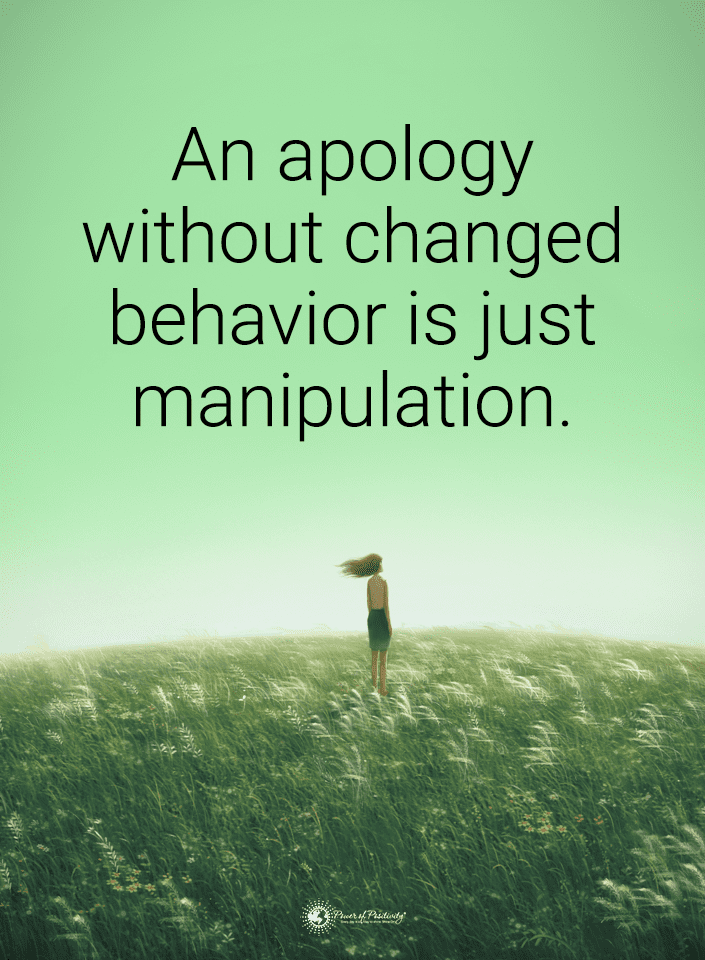Don’t let emotional manipulation cloud your judgment.
Emotional manipulation, an insidious force lurking within relationships, can inflict profound damage on individuals, leaving them emotionally scarred and vulnerable. Understanding emotionally manipulative behavior and its impact on relationships has become increasingly crucial in protecting one’s mental health. It’s also fundamental to fostering healthier connections.
This article looks into the prevalence and harm of emotional manipulation, shedding light on ten key behaviors that reveal an emotionally manipulative person. Understanding the behaviors that indicate an emotionally manipulative person can help individuals protect their mental health. It also helps set the necessary boundaries. By equipping ourselves with the knowledge to identify these behaviors, we empower individuals to safeguard their well-being and set crucial boundaries.
Understanding Emotional Manipulation
Emotional manipulation, a subtle yet potent force that resides within human relationships, warrants a closer examination to unravel its complexities and safeguard against its harmful effects. This article explores the intricate concept of emotional manipulation while highlighting the significance of phenomena such as emotional abuse, manipulative behavior, and toxic relationships.
By exploring its essence, we aim to shed light on the profound impact emotional manipulation can have on individuals, leaving them grappling with confusion, self-doubt, and diminished self-worth. Recognizing the subtle signs of emotional manipulation is vital in protecting our emotional well-being and steering clear of toxic relationships. Join us on this journey of comprehension as we strive to empower individuals to navigate their relationships with greater insight and emotional resilience.
1. Emotionally Manipulative Gaslighting
Gaslighting is a type of psychological manipulation and emotional abuse. The “gaslighter” operates surreptitiously within relationships, leaving victims questioning their reality and sanity. At its core, gaslighting involves a series of cunning tactics to distort perceptions, memories, and beliefs. Manipulative individuals leverage these tactics to systematically erode the victim’s confidence and sense of self.
Gaslighters gain power and control by making the victim doubt their own experiences and emotions. Of course, that makes it difficult for them to trust their judgment. Gaslighting is a prevalent tool used by emotionally manipulative individuals, exploiting their targets’ vulnerabilities for personal gain. As a key indicator of emotional manipulation, recognizing gaslighting’s insidious influence is crucial in protecting one’s mental well-being and fostering healthier relationships built on trust and authenticity.
2. Guilt-Tripping
Guilt-tripping, a subtle yet powerful form of emotional manipulation, plays a central role in specific relationship dynamics, resulting in emotional control over the victim. For instance, manipulators use guilt manipulation as a potent weapon to influence others’ emotions and behaviors, exploiting their sense of responsibility and empathy. Through carefully crafted words and actions, guilt-trippers evoke feelings of remorse and self-blame, effectively coercing compliance with their desires.
This emotional control restricts the victim’s ability to express their needs and opinions freely. Thus, it fosters an environment of emotional dependency and manipulation. Recognizing the nuances of guilt-tripping is essential in breaking free from its grip and establishing healthier boundaries in relationships. By empowering individuals with the knowledge to identify and confront guilt-tripping, they can protect their emotional well-being and foster connections built on mutual respect and emotional honesty.
3. Emotionally Manipulative Victim Blaming
As a form of manipulative behavior, victim-blaming involves blame shifting onto the innocent party to deflect accountability. Manipulative individuals skillfully place responsibility on the victim, allowing them to escape accountability and perpetuate their harmful behaviors. This form of manipulation is often employed to maintain control over the narrative and exploit the vulnerable position of the victim.
As a result, victims of this emotional manipulation endure significant damage to their self-esteem, emotional well-being, and overall perception of reality. So understanding the dynamics of victim-blaming is vital in recognizing toxic behavior patterns and empowering individuals to reclaim their agency. By dismantling the web of victim-blaming, we can foster a culture of empathy, compassion, and emotional responsibility in our relationships and communities.
4. Silent-treatment
The silent treatment, often utilized as an emotional punishment, is another manipulative tactic. It grants one individual communication control within a relationship. When faced with disagreements or conflicts, emotionally manipulative individuals may resort to giving their partner the silent treatment, effectively cutting off all emotional or verbal interaction.
This form of emotional manipulation can leave the victim feeling isolated, ignored, and emotionally vulnerable. The manipulator deploys this tactic to assert dominance and control over the relationship dynamics. By withholding communication, they create a power imbalance, instilling guilt and insecurity in their targets.
Victims of the silent treatment may yearn for emotional connection, making them more likely to acquiesce to the manipulator’s wishes to break the silence and regain emotional validation. Recognizing the impact of silent treatment is vital in breaking free from this toxic behavior and fostering open, healthy communication as the foundation of authentic connections.
5. Emotionally Manipulative Blackmail
Emotional blackmail, a manipulative tool used to exert control, involves leveraging emotional vulnerabilities and insecurities to achieve desired outcomes in a relationship. For example, the manipulator may exploit a partner’s deepest fears, insecurities, or past traumas to gain compliance with their wishes. This psychological pressure undermines the victim’s autonomy and sense of self-worth, fostering emotional dependency.
Emotional blackmail can manifest through threats of withdrawal of affection or love, abandonment, or promises of rewards if specific demands are met. The victim is torn between the fear of losing the relationship and the need to preserve their emotional well-being. Recognizing the signs of emotional blackmail is essential in preserving emotional well-being and establishing boundaries to safeguard against manipulation tactics. By understanding the tactics used, individuals can protect themselves and foster relationship dynamics founded on mutual respect and genuine emotional support.
6. Constant Criticism
Constant criticism, wielded as a weapon of emotional abuse, can reveal emotional manipulation within a relationship. Emotionally manipulative individuals use relentless criticism through the self-esteem manipulation of the victim. For instance, they may attack the victim’s appearance, intelligence, decisions, or personal choices. Thus, it leaves others feeling inadequate and emotionally dependent on the manipulator for validation.
Over time, the victim’s confidence erodes, and they become more susceptible to the manipulator’s control. For instance, the manipulator gains power over the victim’s emotions and decisions, creating an environment of self-doubt and emotional turmoil. Recognizing destructive criticism is essential in breaking free from this manipulation, fostering self-empowerment, and nurturing healthier relationships built on genuine support and encouragement.
7. Love Bombing
Love bombing, a relationship control technique used by manipulative individuals, involves overwhelming their target with excessive affection and attention. It usually occurs in the early stages of a relationship. The manipulator showers their partner with grand gestures, intense affection, love, and compliments, creating an illusion of a passionate and deep connection. However, behind this facade lies a hidden agenda of control.
The manipulator seeks to establish an emotional dependency on their target, leading them to believe they are solely valued and validated by the manipulator. Once the victim becomes emotionally invested, the love bomber may gradually withdraw affection or become emotionally distant, revealing their true manipulative nature.
Recognizing love bombing as a red flag is crucial in safeguarding against emotional manipulation. By understanding this tactic, individuals can protect themselves from falling prey to manipulative relationships. Instead, they foster connections based on genuine emotional reciprocity and mutual respect.
8. Playing the Victim
Playing the victim, a manipulative tactic through emotional deflection, involves deflecting responsibility and shifting blame onto others in various situations. Emotionally manipulative individuals adopt this role to elicit sympathy, empathy, or even guilt from others, evading accountability for their actions. Through victimhood manipulation, they paint themselves as the victim. They seek support and validation while discrediting any criticism directed toward them.
They may exaggerate minor setbacks or twist situations to suit their narrative. Thus, it is difficult for others to hold them accountable for their behavior. Recognizing the manipulation behind playing the victim is essential in establishing boundaries and promoting emotional honesty in relationships. By addressing responsibility avoidance, individuals can foster genuine connections based on open communication and mutual accountability.
9. Twisting the Truth
Emotionally manipulative individuals often employ truth distortion to distort reality and control their targets. Twisting the truth involves misleadingly presenting facts or selectively revealing information to shape the narrative in the manipulator’s favor. Manipulative communication lets The manipulator influence their target’s perception, emotions, and decisions.
They may use half-truths, omissions, or selective memory to present a version of events that benefits their agenda. Recognizing truth-twisting as a sign of manipulation is vital in promoting transparent communication and fostering relationships built on honesty and mutual trust. By encouraging open and honest dialogue, individuals can protect themselves from manipulation and create an environment of emotional authenticity and mutual understanding.
10. Emotionally Manipulative Kindness
When employed as an emotional control tool, kindness can take on a conditional nature, exerting control over others. Emotionally manipulative individuals use conditional kindness and generosity to create emotional debt in their targets, establishing a sense of obligation that allows them to influence emotions and actions. The manipulative individual may show their partner kindness and favors, only to expect reciprocation or compliance to their wishes.
This manipulative behavior fosters an environment of emotional dependency, undermining the target’s autonomy and well-being. Recognizing conditional kindness is vital in establishing boundaries and fostering genuine relationships built on respect and authentic care. By distinguishing between genuine acts of kindness and manipulative behaviors, individuals can protect themselves and foster connections based on mutual compassion and care.
Final Thoughts on Knowing the Signs of an Emotionally Manipulative Person
So trust your intuition when something feels amiss in your relationships. Your instincts are valuable tools that can alert you to potential manipulation. Remember that recognizing and protecting against emotional manipulation can be challenging, and accepting professional help is not a sign of weakness but strength.
Recognizing signs of emotional manipulation, we cultivate connections built on trust, respect, and emotional authenticity. Indeed, we can create a world where emotional honesty thrives. We also ensure that manipulative behaviors find no fertile ground to take root.

















 Community
Community

